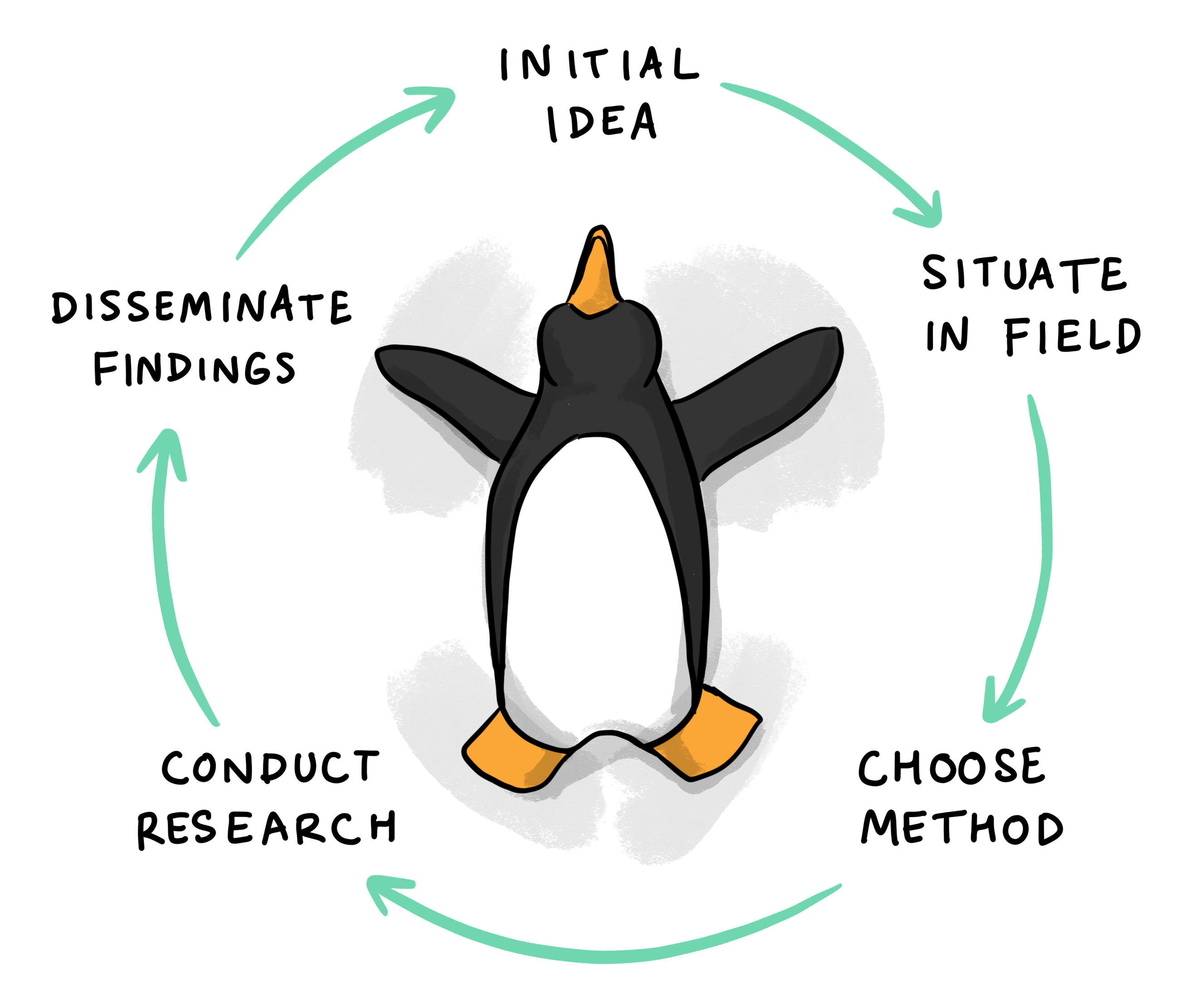Open Research Cycles
If we view a typical research lifecycle as follows:

[Figure 5. The Research Lifecycle]
For each of these stages, open practice can be seen to offer alternatives or opportunities to enhance the phase. Taking each in turn we can examine some examples.
Devise idea
Use of blogs, social media etc can be useful to test out ideas and get early feedback. Also can conduct lightweight pilot studies, surveys and find possible collaborations. We developed an Open research agenda through this method.
Situate in field
Open access has been one of the great successes of open research, it means researchers can have access to literature you might not otherwise. Use of open data can also be useful to test viability. A search through openly available research bids can be productive.
Choose appropriate method
New methods based on open approaches are available such as crowdsourcing, data visualisation, or network analysis. There may be different ways to approach the problem than the traditional ones. For example, Weller et al. (2018) used citation analysis to produce an Open Education Guide. Creswell (2014) provides simple criteria for selecting a research approach, based on problems and questions, research experiences, and audience.
Conduct research
The concept of “guerrilla research” (Weller, 2013) begins from the idea that there is lots of free, open material which means it is possible to conduct “lightweight” research without permission. This is often smaller scale work that can be undertaken by an individual, it effectively condenses the whole research cycle: researcher has the idea, finds open data, undertakes some analysis, then blogs it: all without the need for funding or permission. When doing this kind of research it’s important to maintain standards in research ethics.
An open approach which communicates through social media throughout the process can raise profile and lead to collaboration. Katy Jordan’s work with MOOC completion rates was done using open data, which she blogged and visualised using open tools. This was picked up in the USA and led to an invite from Gates Foundation to bid for further work (Jordan, 2017).
Disseminate
Disseminating work via open access brings greater visibility, citations and downloads “open access citation advantage”. But beyond this there are other approaches to dissemination, including blogs, social media and video to get across messages. Development of other outputs beyond the traditional papers, such as infographics, MOOCs, and open tools. The Open Education Research Hub developed an Open Researcher Pack and Open Researcher Handbook as an output to be used by open researchers to increase capacity.
- Farrow, R., Perryman, L.-A., de los Arcos, B., Weller, M. & Pitt, R. (2016). OER Hub Researcher Pack – a toolkit for open education researchers. Open Education Research Hub. https://oerhub.pressbooks.com/
- Pitt, R. de los Arcos, B. Farrow, R. and Weller, M. (2016). Open Research. Open Education Research Hub. http://oro.open.ac.uk/48035
Arguably open education research has reached a phase of maturity. In recent years we have seen examples which support the idea that open education research is being recognized as a field in itself.

